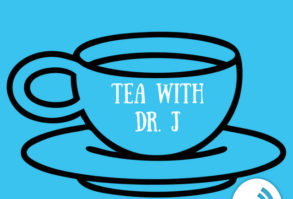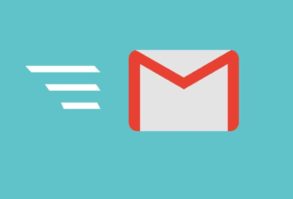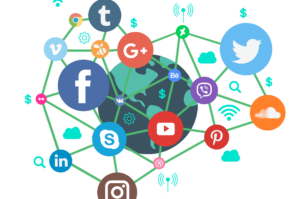I have a book called Journalism After September 11 edited by Barbara Zelizer and Stuart Allan. I always pull it out when I am discussing the history of the blog. It helps remind me of what was and what is.
Stuart Allan wrote an article in the book called Reweaving the Internet: Online news of September 11. In the article he describes what Internet events led up to the Internet’s coverage of September 11. He mentions Princess Diana’s car crash, Clinton’s relationship with White House intern Monica Lewinsky and he includes that many believe Kosovo was the first “Internet War” (119).
Trying to connect to the East Coast during that time was hard. The overload on phone lines was tremendous. I resorted to e-mail to ask my brother what it was like where he lived. My brother and my friends all lived in central New Jersey about an hour from New York City. I tried to connect to CNN.com during that time, but remember the web site’s message that said CNN.com was over capacity and to check back later. September 11 was a wake up call to us all on how we should be getting information. September 11 changed the Internet and the way we search and need information. People were reaching out and posting their own stories on web sites that we now would call a blog. Reporters were finding these web sites and asking eyewitnesses for interviews. Citizens, not reporters, were our information source besides the traditional news media. People were looking for ways to connect after this tragic event. Unfortunately, this was a void in the “new media.”
Stuart Allan says in his article,
This invitation to “be the media,” and thus to challenge traditional definitions of what counted as “news” as well as who qualified as a “journalist,” was very much consistent with the animating ethos of the Internet. Hundreds of refashioned websites began to appear over the course of September 11, making publicly available eyewitness accounts, personal photographs, and in some cases video footage of the unfolding disasters. (127)
Even though we had cell phones, I can’t believe how technologically crippled we were in 2001. We had the Internet, but news web sites did not acknowledge how important a big story could overload their system. E-mail became a source of contact and cell phones without cameras were the norm. The word blog was not a word commonly used if at all and YouTube, well, what was YouTube in 2001?
In an article by Rebecca J. Rosen, 10 years Can Be a Long Time: The World Wide Web on 9/11 points out:
The story is simple: Many of the major features of how we live, communicate, and get our information today did not exist — or at least were in their very nascent stages — in 2001. The entire Internet had 500 million users and something like 3 million public websites. HTML 4.0, which gave the web its basic features, had just entered its final published state. Facebook and Gmail wouldn’t launch for another three years; Twitter for another five. Google was not yet a recognizable verb. Another difference: No one at school had cell phones, let alone wireless Internet access. For those whose parents worked in Lower Manhattan, the school encouraged us to use the landlines in the guidance counselors’ offices to try to get in touch. (The hyperlinks were from Rosen’s article that she provided in her article.)
Imagine the capacity and overload Twitter would have on an event as significant as 9/11. Facebook would be the go to place and news apps on iPads and smart phones would be instantly accessed. The information would not only be coming from the news media, but also from our friends, family and strangers who are gathering information. The only problem is filtering out what would be true and what would not be true. Then imagine the pictures and videos we would all be trying to find on YouTube.
What sets 2011 apart from 2001
During my first year in graduate school not even a year after 9/11, I took a class called Narrative Communications. It is still the best class I have ever took. We discussed how we perceived our lives through narratives. The professor had us write a research paper using narrative methods. My method was an open-ended survey to email out to my brother’s email list from his ecommerce site. I received over 120 responses.
One of the questions I asked was how did you hear about the attack? The most common answer was “I heard it on the radio, but when I arrived at work, I found a television.” I did not hear a lot about the Internet as a source. I found that people wanted a visual to what they heard. The saying “when I see it I’ll believe it.” is why television news is never going to die. A few people mentioned when they DID hear the news on the radio they instantly thought of the 1930’s Orson Wells radio Halloween hoax War of the Worlds. Very few people believed their DJ’s that morning because morning radio is not a serious venue for news. At first many listeners thought it was a cruel joke until they confirmed it by television news.
Today, we can instantly confirm news. We can now confirm with CNN on our mobile app because CNN streams live footage. We can confirm a tweet more easily and we can also check our friend’s Facebook statuses to see what they know. Ten years ago we would have had to make a call on our cell phone to reach a friend to confirm breaking news, but more than likely we would have used a landline.
Smart Phones, Social Media, Mobile Apps were all discovered because someone wanted to fill a need. Maybe 9/11 was the reason because we saw the potential of the Internet. Unfortunately, the Internet could not deliver the results it could today. Ten years taught us that we want information and we want it now. I believe citizen journalism was finally recognized during the 2005 London Bombing attacks when more people had cameras on their cell phones and captured real time chaos that news media could never capture. I like to call these people “accidental journalists.” Accidental journalists are the people who find themselves in a situation they did not expect, but feel the need to share it on their blog, with a news web site or on Twitter.
I could go on and on about events that showed us the power of Twitter or how Facebook allows us to reconnect with people we know. It all comes down to today–the 10 year anniversary. Today, the best story I followed about 9/11 was on Twitter. @jeffjarvis recounted his 9/11 story that caught him in the middle of the towers falling and him fleeing for his life. It’s because of these types of stories that provide the best example of how connected I feel today to my fellow Americans because of social media. Even the world is joining in on America’s conversation today. In 2001 we wanted to have a conversation, but the Internet could only connect us so far. Now… we are connected… but I ask this…what event will happen to show the void again?
The convenience of media messages and communicating to the world is what sets 2011 apart from 2001.




14 comments On How the Internet Changed after 9/11–Citizen Journalism, Social Media and Mobility
Pingback: 9/11 and The Birth of New Media | Digital Navigation ()
It goes to wonder if the government would have shut the cell towers down during those attacks knowing how fast information could travel.
Pingback: Citizen Journalism- should we all run scared from this concept? | Media and the noise ()
Pingback: Citizen Journalism – 9/11 Case Study « Journalism and The Online Revolution ()
Pingback: Citizen Journalism – London Bombings Case Study « Journalism and The Online Revolution ()
Pingback: What If We Had Social Media on 9/11? | Joe Dilallo ()
Pingback: The Rise of Citizen Journalism | Jarrah Bowley ()
Pingback: 9/11 Changed the Media Landscape: From Eyewitness Accounts to Citizen Journalists | 911/Boston Bombing Media News Coverage ()
Pingback: Conclusion | September 11, 2001 and the boston marathon bombings ()
Pingback: Credits and Bibliography | September 11, 2001 and the boston marathon bombings ()
Pingback: Citizen Journalism: Behind the Scenes | An Aspiring Author ()
Pingback: We are Media. We are Citizen Journalism | Forever Changing ()
Pingback: Citizen Journalism | Ellie May ()
Pingback: Citizen Journalism Changing the World – Kerry's Travels ()